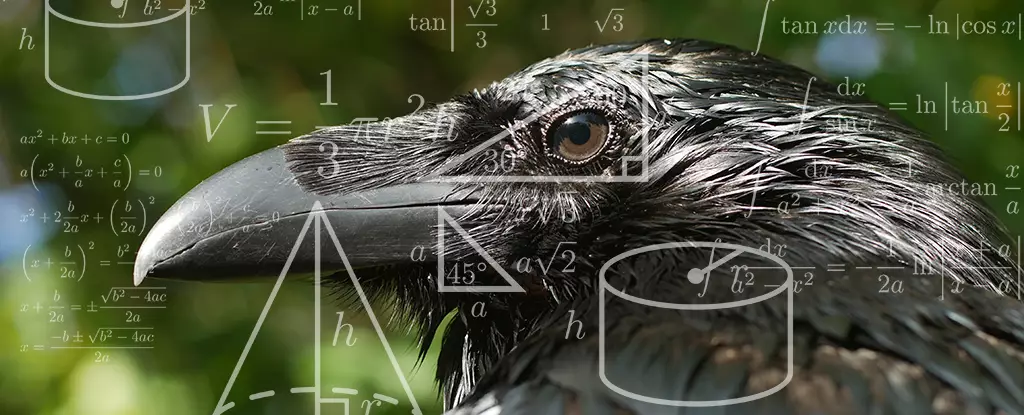In recent years, the narrative that intelligence is a distinctly human trait has been shaken to its core, as new studies reveal startling cognitive abilities found in various non-human species. Among the most surprising discoveries is that of crows, particularly the carrion crow, which has demonstrated an impressive ability to engage with geometry in a manner previously thought to be uniquely human. This revelation propels animals into a more complex cognitive realm and challenges our long-held superiority complex surrounding intelligence.
Traditionally, the belief was that shapes and dimensions were merely tools used for navigation and construction by humans. However, a study led by Andreas Nieder at the University of Tübingen has unveiled that crows possess an innate understanding of geometric principles. By training crows to pick out an ‘odd one out’ among a selection of geometric figures, researchers discovered that these birds favored regular shapes, such as squares and rectangles, over irregular ones like rhombuses. This could shift the lens through which we view animal cognition, puncturing the inflated bubble of human exceptionalism that colors so much of our discourse.
The Evolutionary Roots of Geometry
The implications of the study resonate beyond mere cognitive science. They suggest that the skills to discern geometric patterns are deeply embedded in the evolutionary fabric. Crows, standing tall among their avian counterparts, could be seen as evolutionary pioneers, wielding a cognitive toolkit that we once believed was exclusive to our species.
Crows’ prowess in detecting shape differences correlates with survival skills in the wild, as they are known for their intelligence in navigating their environments. Animals often need to rely on geometric regularities for orientation and navigation. The study indicates that a sharp sense of geometry may grant these birds an invaluable edge, evidenced by their superior adaptability in varying situations. Recognizing regularity could be as critical to their daily existence as it is to ours, forging a connection between their survival and the geometric principles we’ve long taken for granted.
Reshaping Our Understanding of Animal Intelligence
This paradigm shift sheds light on how we perceive intelligence in other animals. The fascination continues to grow around the avian brain, which, though small, exhibits an unexpected depth of understanding. The ability of crows to grasp the nuances of geometry indicates that intelligence is not merely a matter of brain size; rather, it’s about the application of cognitive skills.
It is also interesting to note how this research addresses some long-standing biases in understanding animal intelligence. Historically, the metrics for assessing intelligence have often been skewed towards mammals, with much of the discourse revolving around primates or terrestrial creatures. This has resulted in a systematic oversight of avian cognitive merits. Crows are forging a path towards inclusion in the narrative of intelligent life, reminding us that brilliance exists in myriad forms across the animal kingdom.
The Moral Implications of Recognizing Animal Cognition
As we uncover the sophisticated abilities of non-human animals, a broader and ethically charged question emerges: What responsibilities do we have towards our fellow organisms? Recognizing the cognitive prowess of crows prompts us to reconsider our relationship with them. If these birds are, indeed, more than mere observers but active participants in the geometry of their existence, how does that reshape our interactions with them and the environment they inhabit? Shouldn’t we advocate for their preservation in the face of rapid ecological destruction?
Furthermore, as society strides into an era of ethical consideration concerning animal rights and welfare, the insight into crows’ cognitive abilities begs us to rethink practices that impact their habitats. If we attribute intelligence and an ability to make choices based on geometric understanding, we must also consider their capacity for suffering and wellbeing. This study amplifies the voices calling for humane treatment, driven by a recognition of their inner lives.
In light of crows’ geometric gifts, we are urged to peel back our anthropocentric lens and appreciate the intricate abilities that many animals possess. As we navigate the complexities of our own advancements, let’s not neglect the remarkable minds of our feathered counterparts, who demonstrate that intelligence is not a privilege of humanity but a shared trait among many life forms.

Leave a Reply